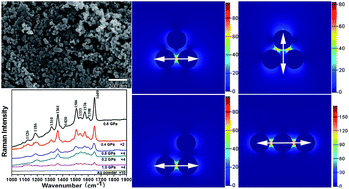Experimental and simulative study on surface enhanced Raman scattering of rhodamine 6G adsorbed on big bulk-nanocrystalline metal substrates
Abstract
Big bulk-nanocrystalline metal materials of silver (Ag) and aluminum (Al) for surface-enhanced Raman scattering (SERS) spectroscopy have been synthesized in a mold under different pressures using vacuum-warm-compaction technology. It was discovered that pressure could control the SERS activity of the bulk-nanocrystalline material. SERS properties of the bulk-nanocrystalline material in the presence of adsorbed rhodamine (R6G) could be obtained through selecting a proper pressure. Compared with the Ag nanoparticles (Al nanoparticles), the SERS peak intensity of R6G adsorbed on the bulk-nanocrystalline material is about 1000 times (100 times) stronger. The electric field enhancement of the bulk-nanocrystalline material has been described to be a systematic investigation by using three-dimensional finite-difference time-domain (3D-FDTD) simulation. The FDTD calculations have shown that the electric field enhancement of the bulk-nanocrystalline material is strongly dependent on the gap distance. In summary, SERS active bulk-nanocrystalline materials have been synthesized simply, greenly and cost effectively by the method reported here, and this method is expected to be utilized in the development of SERS-based analytical devices.

- This article is part of the themed collection: Surface enhanced Raman Spectroscopy: Editors collection for RSC Advances

 Please wait while we load your content...
Please wait while we load your content...